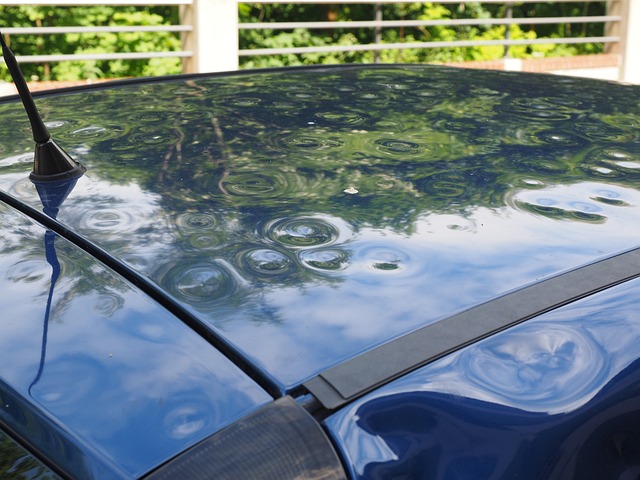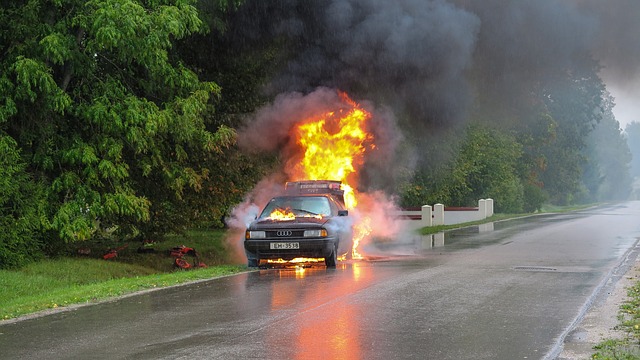This guide emphasizes the importance of Comprehensive Insurance for vehicle protection. It highlights how this type of policy covers damages beyond regular accidents, including theft, vandalism, natural disasters, and specific components like windshields. Understanding what's covered and excluded is crucial when choosing a plan that aligns with individual needs and risks. Proactive policy management, comparing providers, and staying current ensure optimal coverage and peace of mind on the road, protecting against unforeseen financial burdens.
Comprehensive car protection is an essential consideration for every vehicle owner, offering a robust safety net against unforeseen events. This article guides you through the intricacies of comprehensive insurance, revealing what it covers and how it safeguards your asset. We’ll explore various damage types, advantages, and potential exclusions. Learn how to choose the right coverage, compare quotes, and make claims efficiently. Discover real-world scenarios where comprehensive protection proves invaluable, ensuring peace of mind on the road.
Understanding Comprehensive Car Insurance: What It Covers

Types of Damages Included in Comprehensive Policy

Comprehensive car protection policies offer a wide range of coverage for various types of damages, providing peace of mind on the road. Unlike liability insurance that primarily covers accidents causing harm to others, comprehensive insurance shields you from more specific perils. These include damage caused by weather events like storms, floods, or hail, as well as animal-related incidents. It also covers damages resulting from vehicle theft or vandalism, safeguarding your investment against significant financial losses.
Additionally, many comprehensive policies extend protection to specific components of your car, such as the engine, transmission, and audio system. This ensures that even minor incidents like rust, electrical failures, or cracked windshields are covered, preventing unexpected repair bills. By encompassing these diverse scenarios, comprehensive insurance acts as a shield, offering financial security and ensuring your vehicle remains in optimal condition.
Advantages of Comprehensive Car Protection

Comprehensive car protection, often provided through comprehensive insurance policies, offers a multitude of advantages for vehicle owners. This type of coverage goes beyond the basic liability and collision deductibles, providing peace of mind by shielding against a wide range of potential risks and damages. From natural disasters like floods and storms to man-made incidents such as theft or vandalism, comprehensive insurance steps in to cover the costs associated with these unforeseen events.
One of the key benefits is the financial security it offers. Comprehensive coverage can repair or replace your vehicle entirely, ensuring you’re not left with a substantial out-of-pocket expense when an accident or incident occurs. Moreover, it includes protection against damages that might not be covered by regular insurance policies, such as damage from hailstorms, animal collisions, or even civil unrest. This added layer of defense can prove invaluable, making comprehensive car protection a wise investment for any vehicle owner seeking comprehensive peace of mind on the road.
Common Exclusions and Limitations to Be Aware Of

When considering comprehensive car protection, it’s crucial to understand that not all damages are covered under this type of insurance. Comprehensive insurance typically excludes losses due to wear and tear, normal maintenance, or events like natural disasters or acts of war. It also generally does not cover personal belongings left in the vehicle or damage caused by driving under the influence.
Additionally, some policies may have specific limitations on the value of repairs or the types of vehicles they will insure. Others might exclude certain high-risk areas or activities. Carefully reviewing the policy’s terms and conditions is essential to avoid surprises later. Understanding these exclusions allows you to make an informed decision when choosing a comprehensive insurance plan that aligns with your needs.
Choosing the Right Coverage for Your Vehicle

When selecting comprehensive insurance, it’s crucial to understand your vehicle’s unique needs and the potential risks it faces. Comprehensive coverage is a valuable addition to your auto policy as it protects against a wide range of unforeseen circumstances that could damage or render your car useless. This includes events like theft, vandalism, natural disasters, and even accidental damage. However, not all comprehensive insurance policies are created equal; various factors influence the level of protection you receive.
Consider your driving habits, the area where you park your vehicle, and the security measures in place at your home or workplace. If you live in a high-crime neighborhood or frequently leave your car unattended in unsecured locations, opt for a policy with higher deductibles and broader coverage to match these risks. Conversely, if you mostly drive in safe areas and have secure parking, a more basic comprehensive plan might suffice. Researching different insurance providers and comparing their offerings is essential to finding the perfect fit for your vehicle’s protection needs.
Comparing Quotes and Policies from Different Providers

When shopping for comprehensive insurance, comparing quotes and policies from different providers is a crucial step. Start by gathering information on coverage limits, deductibles, and additional perks offered. Each provider may have unique features or exclusions, so thoroughly read through each policy to understand what’s included and what isn’t. Online platforms can make this process easier by allowing you to compare side-by-side.
Don’t solely base your decision on price; consider the reputation of the insurance company and customer reviews. Comprehensive insurance is designed to protect you from various risks, so ensure that the policy aligns with your needs. By taking the time to compare, you can find a balance between coverage and cost, ultimately securing peace of mind on the road.
Making a Claim: Steps and Procedures

Making a claim with your comprehensive insurance provider should be a straightforward process, but understanding the steps involved can help ensure everything runs smoothly. Firstly, review your policy documents to understand what is covered and any specific conditions or exclusions. Comprehensive insurance typically covers damages like theft, vandalism, natural disasters, and accidents, but policies vary, so it’s crucial to check.
When an incident occurs, document all details: take photos of the damage, record the date, time, location, and any relevant information about the incident. Contact your insurance provider as soon as possible to report the claim. They will guide you through the process, including providing a claims number and instructions on how to submit supporting documents like police reports or repair estimates. Keep records of all communications and documents for easy reference during the claims settlement.
Top Tips for Maintaining Your Comprehensive Insurance

Staying on top of your Comprehensive Insurance is a key step in protecting your vehicle and yourself from unexpected financial burdens. Regularly reviewing and updating your policy ensures it remains tailored to your needs. One effective tip is to meticulously document all modifications or significant changes to your car, such as new parts or accessories. This detailed record will help when filing claims, ensuring accurate coverage.
Additionally, stay informed about the evolving landscape of Comprehensive Insurance options and deductibles. Compare different providers’ offerings and consider the level of coverage that aligns with your driving habits and vehicle’s age. Regular communication with your insurance provider is also beneficial; they can offer insights into potential savings, new policy features, or changes in regulations that might impact your coverage.
Real-World Scenarios: When Comprehensive Protection Matters

In everyday life, vehicles face numerous challenges that can lead to costly repairs or even total loss. Imagine a scenario where a driver encounters a deer on the road, causing significant damage to their car. Or perhaps a young driver, eager to explore, drives through a storm, resulting in water damage inside the vehicle. These real-world events highlight why comprehensive insurance is an essential protection measure for any vehicle owner.
Comprehensive coverage steps in to cover damages beyond typical accidents, including theft, vandalism, and natural disasters. It provides peace of mind, ensuring that unexpected incidents don’t leave you burdened with massive repair bills or financial strain. By having comprehensive insurance, drivers can focus on their daily lives, knowing their vehicles are protected against a wide range of potential hazards.
